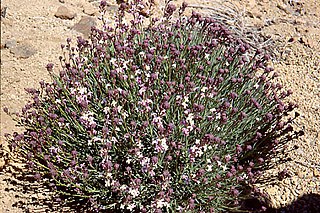
Erysimum, or wallflower, is a genus of flowering plants in the cabbage family, Brassicaceae. It includes more than 150 species, both popular garden plants and many wild forms. The genus Cheiranthus is sometimes included here in whole or in part. Erysimum has since the early 21st century been ascribed to a monogeneric cruciferous tribe, Erysimeae, characterised by sessile, stellate (star-shaped) and/or malpighiaceous (two-sided) trichomes, yellow to orange flowers and multiseeded siliques.
Martín Sessé y Lacasta was a Spanish botanist, who relocated to New Spain during the 18th century to study and classify the flora of the territory. The standard author abbreviation Sessé is used to indicate this person as the author when citing a botanical name.

Real Jardín Botánico de Madrid is an 8 hectares botanical garden in Madrid (Spain). The public entrance is located at Plaza de Murillo, next to the Prado Museum.
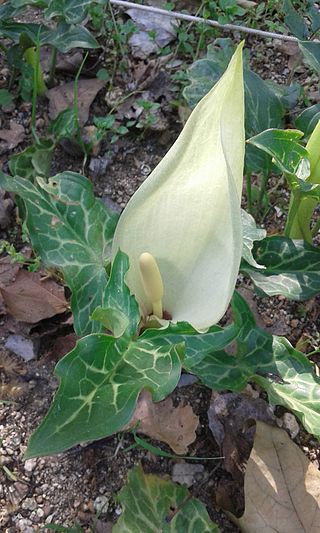
Arum italicum is a species of flowering herbaceous perennial plant in the family Araceae, also known as Italian arum and Italian lords-and-ladies. It is native to the British Isles and much of the Mediterranean region, the Caucasus, Canary Islands, Madeira and northern Africa. It is also naturalized in Belgium, the Netherlands, Austria, Argentina, North Island New Zealand and scattered locations in North America.

Teucrium chamaedrys, the wall germander, is a species of plant native to the Mediterranean regions of Europe and North Africa, and the Middle East as far as Iran. It is used as an ornamental.

Erysimum mediohispanicum is a perennial short-lived monocarpic herb found in many montane regions of eastern Spain where it is distributed between 800–2,000 m above sea level and inhabits forests, scrublands, and shrublands. It occupies two main regions in the Iberian Peninsula, one in the north and the other in the south-east. Erysimum mediohispanicum may be treated as one of a group or complex of six closely related species, or as Erysimum nevadense subsp. mediohispanicum.

Erysimum nevadense is a perennial short-lived herb endemic to the Sierra Nevada of Spain, although there are some citations in the nearby Sierra de Gádor (Almería). This wallflower occurs between 1,700 and 2,700 m above sea level in subalpine scrublands and alpine meadows. It may be treated as a narrowly circumscribed single species, one of a group or complex of six separate species, or as a more broadly circumscribed species with six subspecies.
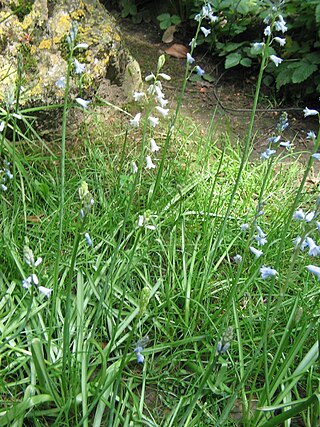
Brimeura is a genus of bulb-forming, monocotyledonous perennial plants. They have narrow leaves and bear bluebell-like flowers in Spring. Brimeura is treated in the family Asparagaceae, subfamily Scilloideae, tribe Hyacintheae, subtribe Hyacinthinae. It contains the following species

Dactylorhiza incarnata, the early marsh-orchid, is a perennial, temperate-climate species of orchid generally found growing in wet meadows, and generally on base-rich soils, up to about 2100m asl. The species occurs widely in Europe and Asia from Portugal and Ireland east to Siberia and Xinjiang.

Dactylorhiza elata, the robust marsh orchid, is a species of flowering plant in the family Orchidaceae, native to the western Mediterranean region.
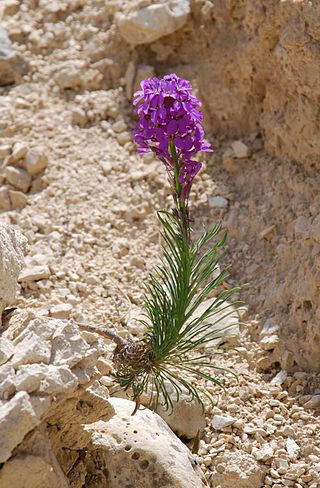
Erysimum cazorlense is a short-lived, mostly monocarpic herb endemic to the Cazorla and Segura mountain ranges, SE Spain. Erysimum cazorlense may be treated as a distinct species or as Erysimum myriophyllum subsp. cazorlense.

Dactylorhiza insularis is a species of terrestrial (ground-dwelling) plant, in the genus Dactylorhiza in the orchid family (Orchidaceae). It is native to the western Mediterranean region: Spain, Portugal, Morocco, France, and Italy.
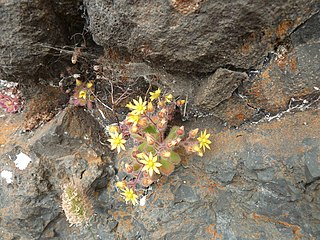
Aichryson villosum is a species of herbaceous flowering plants in the family Crassulaceae endemic to the Madeira Archipelago. The species was first described by Sabin Berthelot and Philip Barker-Webb in 1840, published in Natural History of the Canary Islands. Aichryson santamariensis was previously included in this species, but is now considered a different species endemic to Santa Maria Island, Azores.
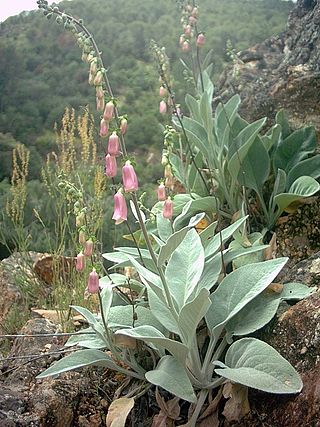
Digitalis mariana is a flowering plant species in the family Plantaginaceae. It is a perennial foxglove with evergreen foliage and rose-red coloured flowers produced in summer. It is native to Portugal and Spain.
Erysimum fitzii is a biennial or short-lived perennial plant native to southern Spain. It has been treated as one of a complex of six species making up the nevadense group, or as Erysimum nevadense subsp. fitzii.
Erysimum merxmuelleri is a biennial or short-lived perennial plant native from eastern Portugal to western Spain. It has been treated as one of a complex of six species making up the nevadense group, or as Erysimum nevadense subsp. merxmuelleri.
Erysimum rondae is a biennial or short-lived perennial plant native to southwestern Spain. It has been treated as one of a complex of six species making up the nevadense group, or as Erysimum nevadense subsp. rondae.

Biarum tenuifolium is a tuberous flowering plant species in the family Araceae.

Santiago Castroviejo y Bolíbar was a Spanish botanist. He is credited with identifying and naming 63 species in the IPNI. The abbreviation "Castrov." is used to indicate Santiago Castroviejo as an authority in the scientific description and classification of species.














